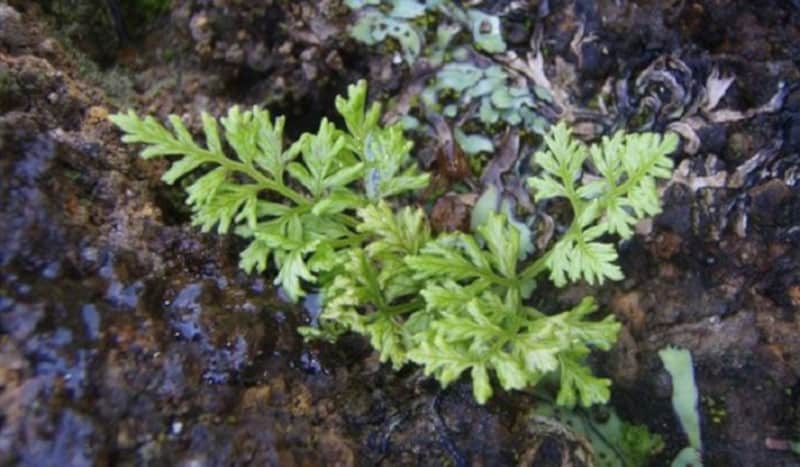
Ascension Island Parsley Fern Facts
- Don’t make the mistake of assuming that the diminutive Ascension Island Parsley Fern holds little importance, especially not within its own ecological niche. For the moment, this marvel of Nature has not other generally accepted common name applied to it.
- This unusual fact does nothing to diminish its relative importance, however. That’s because this incredible species quite perfectly demonstrates the proof of the point that small in stature does not automatically equate to unimportant in the grand scheme.
- Perhaps most notably, this tiny, but truly remarkable, plant presently holds a most unfortunate status with various organizations that routinely track such things. That sad fact holds true because it ranks as one of the rarest of all known plants in the world.
- More specifically, and incredibly, for the moment, only 4 known individual specimens of this distinctive, but extremely rare fern still exist in the wild. The marvelous little fern nevertheless currently stands as a symbol of hope for many conservationists.
- That’s due to the fact that it represents proof that preservation efforts can successfully make a difference. Following its rediscovery, efforts to preserve it have been ongoing. Researchers previously, thankfully erroneously, believed it to extinct until 2010.
- Over 60 specimens have now been cultivated in several locations, following its rediscovery, however. The IUCN, however, nevertheless classifies the Ascension Island Parsley Fern as Critically Endangered, given the precarious state of its existence.
Related Articles
Ascension Island Parsley Fern Physical Description
Sadly, its scant numbers render certain deductions about the physical characteristics of the Ascension Island Parsley Fern difficult to verify. With only four specimens existing in the wild, botanists understandably hold certain reservatons aabout making concrete statements.
In point of fact, they naturally remain uncertain if these specimens represent average examples of the size of the species in its natural state. For the moment, however, it must be assumed that the nature of these specimens represents the true norm.
This fern rarely attains a height of more than 4 in (10 cm). It also possesses yellow-green leaves reminiscent of parsley, thus serving as the source of the common name. Some doubts still exist about the potential size of the Ascension Island Parsley Fern, however.
This state of affairs occurs mainly due to the fact that specimens grown in cultivation do seem to attain a noticeably larger size. The leading theory proposes that this happens due to the extremely harsh conditions of the native environment of the species.
- Kingdom: Plantae
- Phylum: Tracheophyta
- Class: Polypodiopsida
- Order: Polypodiales
- Family: Pteridaceae
- Genus: Anogramma
- Species: A. ascenionis
Ascension Island Parsley Fern Distribution, Habitat, and Ecology
Most unfortunately for this wonder of Nature, as its very name implies, the amazing Ascension Island Parsley Fern has an extremely restricted natural habitat range. This same range, furthermore, easily qualifies as an especially inhospitable one for any species.
Most notably, as the common name implies, the small fern evolved as solely native to Ascension Island, situated 1,000 mi (1,600 km) from the coast of Africa. The very nature of its environment makes one wonder how it ever evolved in the area to begin with.
To date, the only known specimens in the wild live on the steep, rocky and rather harsh slopes of Green Mountain. For the time being, the remarkable little fern does not appear to live anywhere else in the world. This makes its situation impossibly perilous.
Like most other ferns, the wonderful Ascension Island Parsley Fern also propagates via the immense quantity of spores it releases. The few remaining wild specimens, however, inhabit hard, rocky ground. This, regrettably, provides little hope of successful spreading.
In conclusion, the island on which it appears has also lost a great majority of its native species, including the fern bearing its name. Though other factors certainly contributed to this sad loss, it mainly happened due to the introduction of invasive species.
Species Sharing Its Range
Check out our other articles on Magnificent Mammals of Australia, Limnonectes larvaepartus, Christmas Island, Chatham Island forget-me-not, Yosemite Cave Pseudoscorpion, Jewelled Gecko
